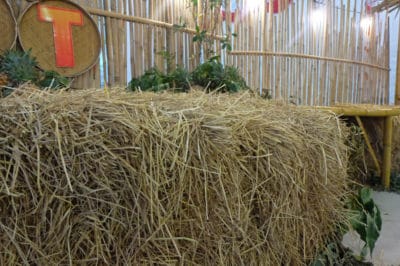Straw or Hay
Either straw or hay would work as a growing medium. Straw is less likely to contain grassy weeds, which may be an issue if you’re growing near your lawn or flower beds. In either case, try to find smaller bales unless you have machinery to move them – a straw bale can weight 120 pounds. Choose organic straw or confirm it has not been sprayed with herbicides.
Prepping the Bales
In the early spring, obtain as many bales as you need. Place your bales in an area that gets at least six to eight hours of full sun a day. Eight hours is better if possible. Place with the cut ends of the straw facing up – twine or wire on the sides. Saturate the bales with water until water runs freely from the bottom of the bale. Repeat this watering process at least twice, one day apart.
Composting
The straw is a growing medium but doesn’t have a lot of nutrients, so you’re going to start it composting. On day four, sprinkle the bales with bone meal (which is high in nitrogen). Water again and repeat this process for three more days. On day 10, sprinkle the bales with 10-10-10 fertilizer and water again. The bales should feel warm when you touch them.
Planting Step by Step
Here’s how to plant:
- Use a large, sharp knife to make vertical holes in the bale. If it feels hot to the touch, wait a few days to plant.
- Hold the hole open and plant small whole potatoes or large potatoes cut in sections with at least two eyes.
- Plant about six inches deep and 12 inches apart – one bale should handle four plants.
- Allow the hay to close over the potatoes and water thoroughly again.
Growing and Harvest
Continue to water to keep the bales moist – you may need to water every day if the weather is very hot and windy. Apply water-soluble 10-10-10 fertilizer at least once a week; nutrients leach from the bottom of the bale. It’s hard to harvest new potatoes as you can’t really get at them. Wait until the tops start to die down. Three or four weeks later, cut the bales open and harvest your spuds. Use the straw in your compost pile.
